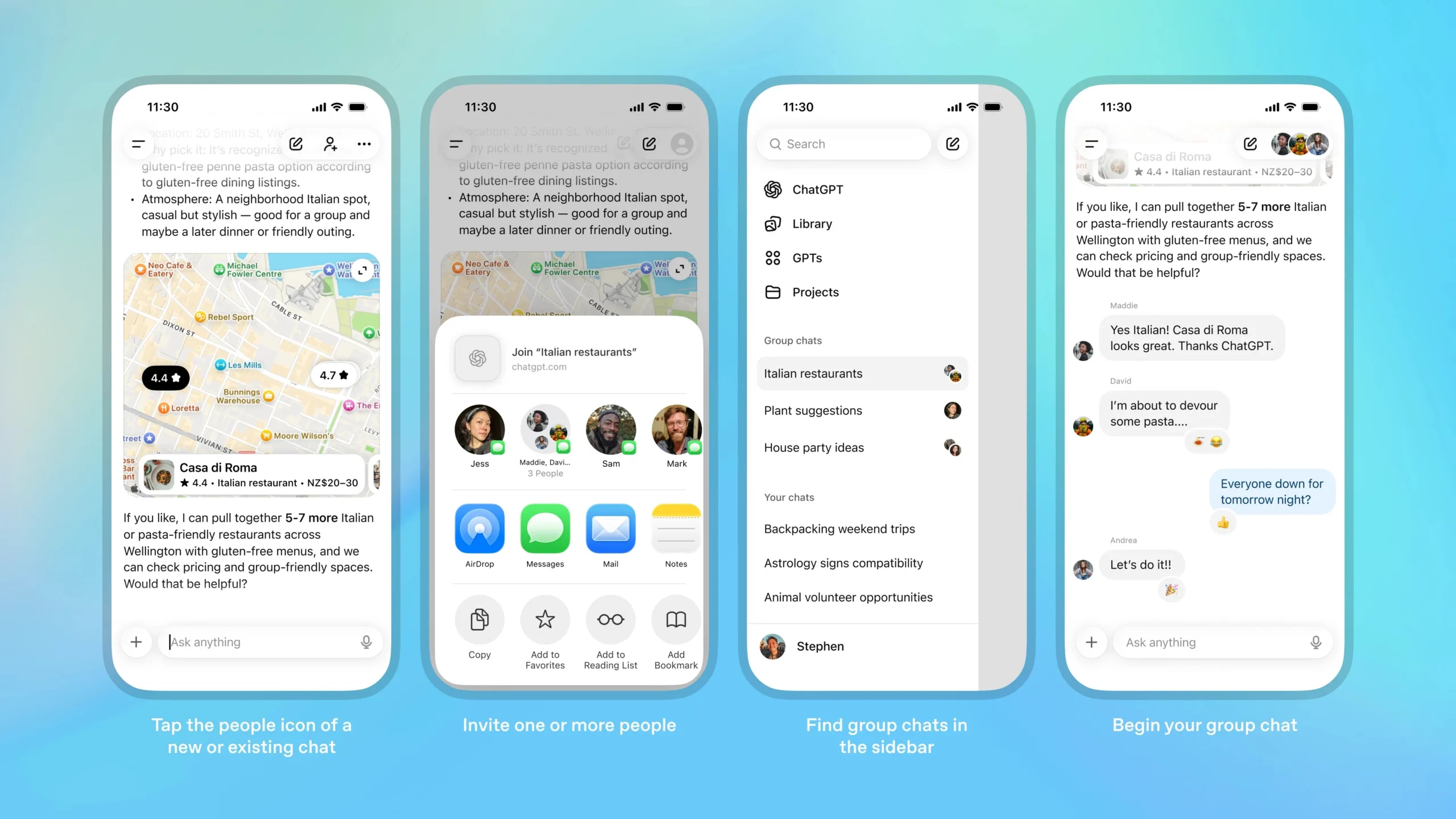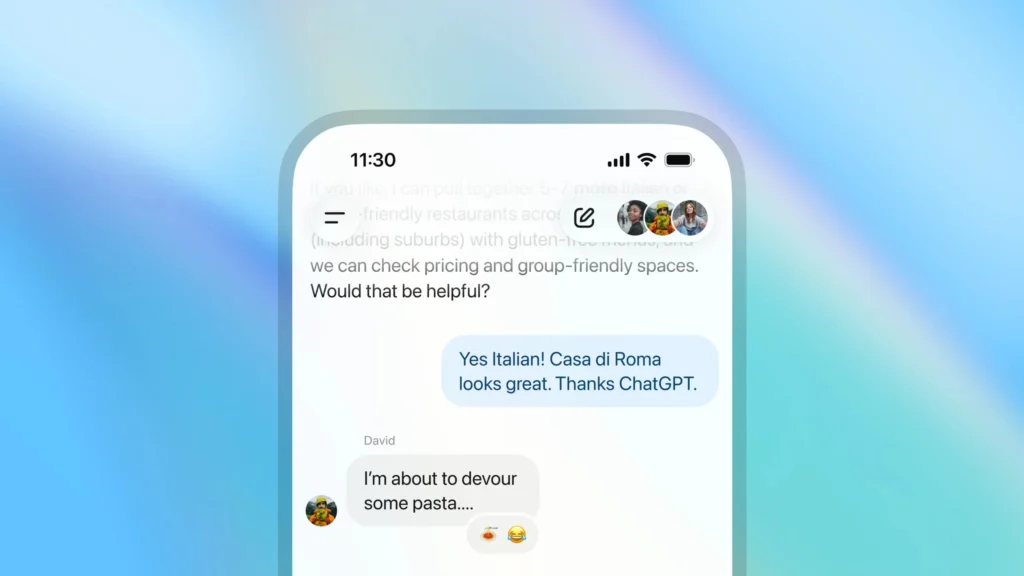ChatGPT becomes social: OpenAI tests discussion groups for collaborative chats
OpenAI has taken a significant step forward in the evolution of ChatGPT. The company has begun rolling out a highly requested feature—group discussions—in select regions such as Japan and South Korea.
The concept is simple yet ambitious: allow multiple users, along with ChatGPT, to engage in the same conversation, akin to Meta AI in a WhatsApp group.
In practical terms, ChatGPT will not only serve as an assistant but also as an active participant in a collaborative space, equipped to interact, respond, contribute, or remain silent based on the context.
How to create a group in ChatGPT?
The operation is designed to be as intuitive as in any standard messaging app. Simply open a chat and tap the icon representing people located at the top right to create or join a group. On your first use, ChatGPT will prompt you to set up a mini-profile, including your name, nickname, and a photo.
You can then share an invitation link, which allows up to 20 participants to join. Similar to a real group conversation, any member can share this link in turn—except for removing the creator, who is the sole unremovable member of the group.

A more social ChatGPT
In these multi-person conversations, responses are generated using GPT-5.1 Auto, which means that ChatGPT automatically selects the optimal model based on the question and the subscription level of the participants (Free, Go, Plus, or Pro).
But that’s not all: OpenAI has trained ChatGPT to adopt new social behaviors. The bot now better understands the rhythm of a group discussion and can spontaneously react with an emoji, choose to remain silent when it has nothing to contribute, step in when addressed simply by typing “ChatGPT,” and follow the flow of messages just like a regular member.
In short, it blends into the group without dominating the conversation. This subtle approach enhances the overall experience—sometimes even in a disconcerting way.
Confidentiality remains in check
OpenAI clarifies that ChatGPT’s personal memory is never used in a group setting. Additionally, the AI does not create any new memories from these shared conversations.
Each group can also set customized instructions to determine how ChatGPT should behave in this specific chat: more concise, more discreet, more expert… it’s up to you to choose.
Availability
The pilot phase is gradually launching on mobile and web for all connected users (Free, Go, Plus, or Pro) in Japan, New Zealand, South Korea, and Taiwan.
OpenAI presents this new feature as the beginning of a deeper transformation: evolving ChatGPT from a solitary tool into a shared collaborative space.
If the trial is successful, the company promises to expand this feature to other regions and enhance it based on feedback from initial users.




